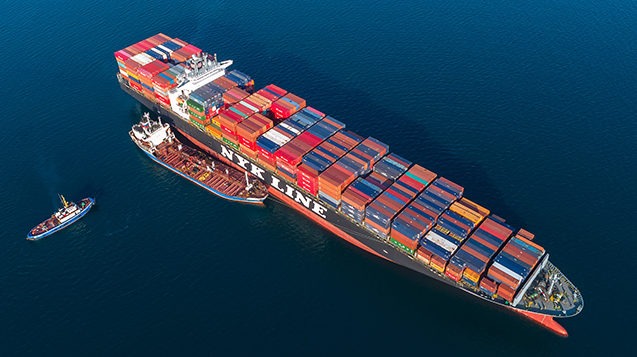Container lines have blanked an unprecedented number of sailings to bring capacity in line with the coronavirus-stricken cargo demand.
Blank-sailings data is a key leading indicator for U.S. ports, cargo shippers, truckers and railways. A container ship that doesn’t depart from Asia equates to a container ship that doesn’t arrive on the U.S. West Coast two to three weeks later, or on the East Coast four to five weeks later. What matters to American businesses is U.S. port arrivals, not foreign departures. American businesses want to know exactly how much arrival capacity will be reduced, exactly when it will be reduced, and how this reduced capacity will compare year-on-year.
The latest data shows changes to headhaul capacity from Asia to North America, as well as changes to mainline capacity to individual U.S. ports. Taken together, this offers the clearest publicly available picture yet of how the coronavirus is affecting the container-shipping network that supplies America. According to the data provided by eeSea, 51 of 243 scheduled North American arrivals from Asia have been cancelled in May; 44 of 236 in June; and 23 of 240 in July.
Major capacity reductions in May and June are telling — and ominous. Lower cancellation numbers starting in July do not prove a positive trend because the carriers have not decided on schedule changes that far out. May arrival numbers are set, June numbers have room to increase, and numbers for July forward could increase substantially.
West Coast versus East Coast
In comparing trade lane data for Asia-West Coast arrivals to Asia-East Coast arrivals, blank sailings will cut inbound capacity to the West Coast by 23% in May and 17% in June. The data reflects a different scenario for the East Coast, possibly due to the longer transit times from Asia. Blank sailings will reduce this May capacity by 16% and will lower capacity in June by 23%.
Capacity Vs. Volume, Does the Data Indicate Recovery?
While it is clear that container-ship capacity to the U.S. will definitely fall in both in May and June, and possibly thereafter, there are a few caveats to the data.
Capacity is a strong leading indicator of throughput trends, because it shows carriers’ reaction to cargo demand, but ship-capacity reductions do not directly translate into volume reductions.
The relationship between capacity and volume depends on utilization — the percentage of available container slots on the ships that are used. If total ship capacity is reduced but average utilization is increased, volume may fall at a slower rate than total ship capacity. If utilization decreases despite reduced total capacity, volume may decline faster than total capacity.
Blank-sailing data is important shippers as they plan for supply-chain disruptions. It is also a good indicator that if carriers have still not brought their July and August capacity cuts up to the 15-20% levels of May and June, it would imply that carriers see cargo demand rebounding — a positive signal on the coronavirus recovery.
Source: Freightwaves


